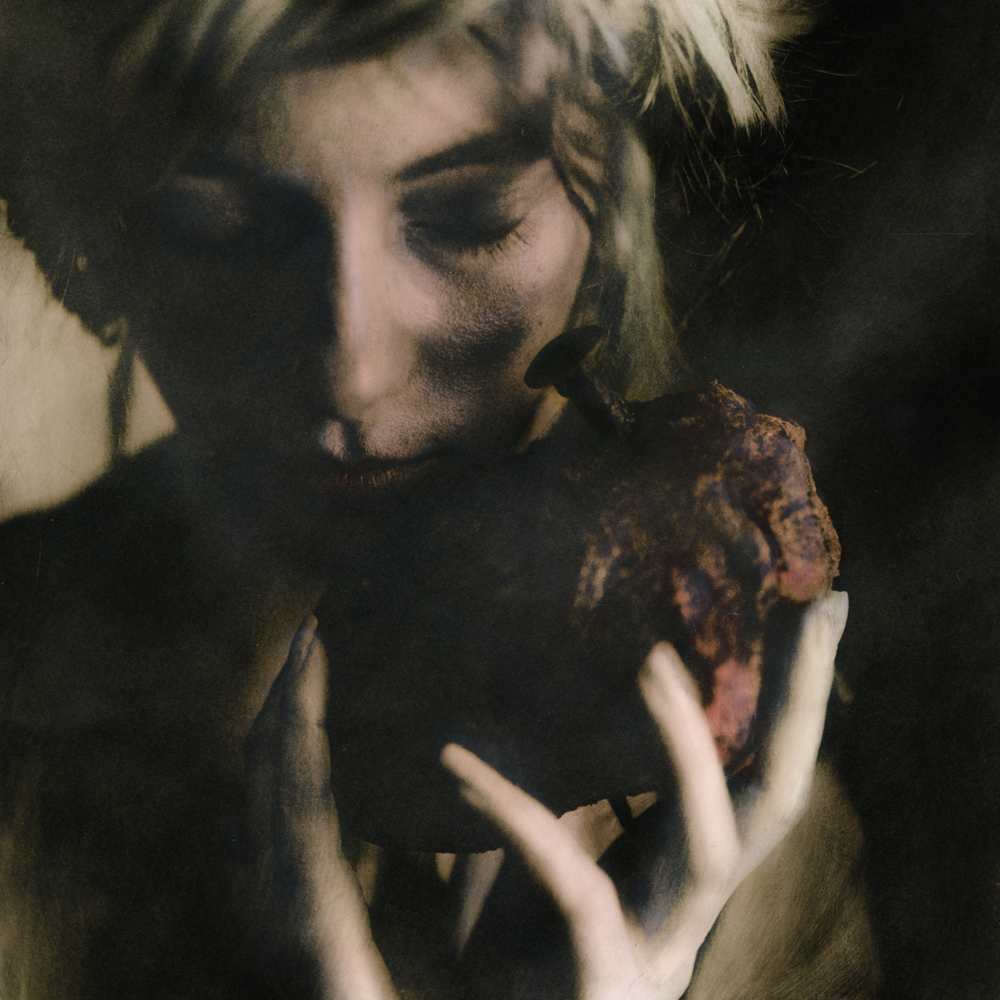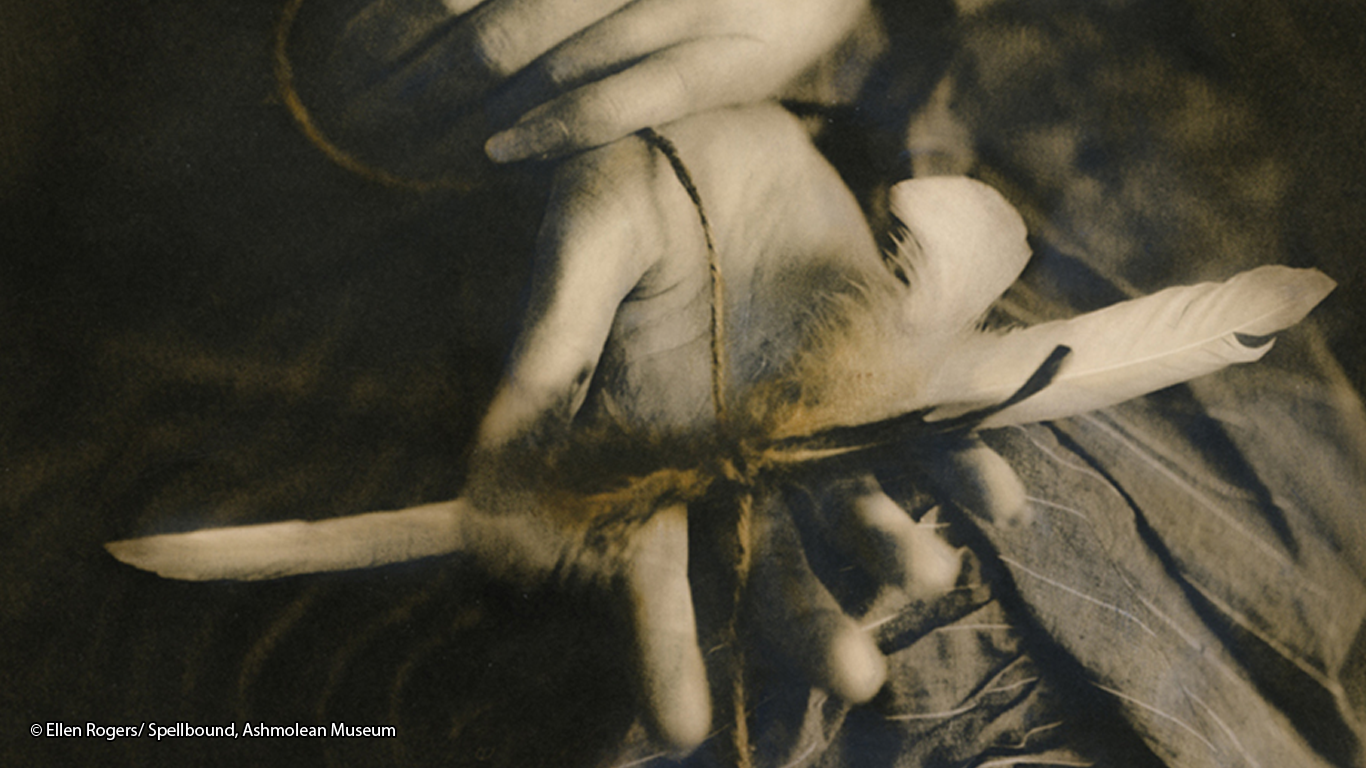Overlapping as it does with the Bodleian Library’s magnificent Tolkien exhibition, there was always going to be something special about the Ashmolean Museum’s exhibition, Spellbound. From Lewis Carroll to C. S. Lewis, Tolkien to Garner and Cooper, and to the present day with Philip Pullman (who has written an excellent essay to accompany the exhibition), Oxford is seen – or maybe sees itself – as a centre for writing about magic and fantasy, and the museum and library collections support this in so many ways: this is not so much Waugh’s “city of aquatint” as a place of Gothic shadows.

The Ashmolean exhibition space is similarly a space for shadows and questions, odd corners and alcoves. Spellbound (on Twitter @AshmoleanMuseum uses the hashtag #spellboundexhibition) begins with a room containing one of Oxford’s best-loved magic items, the witch in a bottle from the Pitt Rivers museum, and the quick challenge of a ladder – will we walk under it or not? This sets up a major theme of the exhibition: to confront the visitor about how much we set store by traditional practices (or seek to set up our own) to try and manipulate the world. The curators challenge us with a series of questions about our own relationship to luck or to ritual, but the exhibition goes beyond this personal reflection, and looks more broadly at the traditions and practices of magical thinking in Europe, linking medieval spells, folk practices and seventeenth-century witch trials. In doing so it presents manuscripts, objects such as padlocks and magic cups, embroidery, charms carved into barn doors, and combines them with art from intriguing works from the seventeenth and eighteenth centuries to stunning modern installations. Just as we are drawn in by the questions the curators pose, we are challenged by the newly created art – the poignant magical thinking of a contemporary tapestry; haunting music; a crystalline body suspended above demonic figures…

The dark, central room is the one where the folk elements of magical thinking are presented and for me is where the exhibition is at its most creative. Concealment is explored not only in the selection of items – the stark mummified cat at one end, and the visual and auditory marvel of Katharine Dowson’s installation Concealed Shield at the other – but in how items (such as boots, bones and a belemnite fossil) are actually hidden in dark chimneys of displays. Their location in the shadowy room clearly puzzles visitors (and sometimes gallery attendants) but gives a truly affective experience of the practices the curators are exploring.

A recorded re-enactment of a witch trial where the accused “heard the voices of her dead children” gives us pause for thought – quite literally – in an alcove in the middle of the final room. Established religion and law are in a power struggle against folk wisdom which functions as help but also as threat. Who is the gullible here? Who is lost in a maze of fear or driven by grief? Here we are invited to explore opposition and propaganda as well as persecution and decline, in the context of a growing scepticism about witchcraft. A modern charm bottle recovered from the Thames poses the question: how do we seek to manipulate the world around us? What is our magical thinking made up of? Where are its roots? How does it continue?

If I have a criticism of this astonishing exhibition it is in its reticence when exploring the relationship between magical thinking and religion. The exhibition includes startling material about Spiritualism – but remains oddly silent about Wicca. Similarly this is a largely Euro-centric exhibition, and while this is partly explained by a need for focus, it might also arise from a caution about engaging with bigger questions about cultural sensitivity. To look at demons controlling love, or padlocks affirming constancy – or invoking St. Michael for protection – tells a rich story, but one that is limited in time and space. A fuller story would have made, perhaps, an unwieldy exhibition experience: there is enough here to set the mind wondering, and the accompanying book – much more than a catalogue, more a richly illustrated series of essays – takes us still further.
The Ashmolean has given us an exhibition to delight and inform, and also to challenge and provoke as it invites us to ask how we view our place in a changing and unstable world.

Win a Pair of Tickets for the Spellbound Exhibition!
The amazing folks over at the Ashmolean Museum have offered a pair of tickets for a lucky #FolkloreThursday newsletter subscriber this month, with a copy of the exhibition catalogue going to a runner up!
Sign up for the #FolkloreThursday newsletter to enter (valid November 2018; UK & ROI only).
Buy tickets online here.
References & Further Reading
Page, S et al (2018) Spellbound: Magic, Ritual and Witchcraft. Oxford: Ashmolean Museum
Pullman, P (2018). “Why we believe in magic”. Guardian 1st Sept 2018 .

